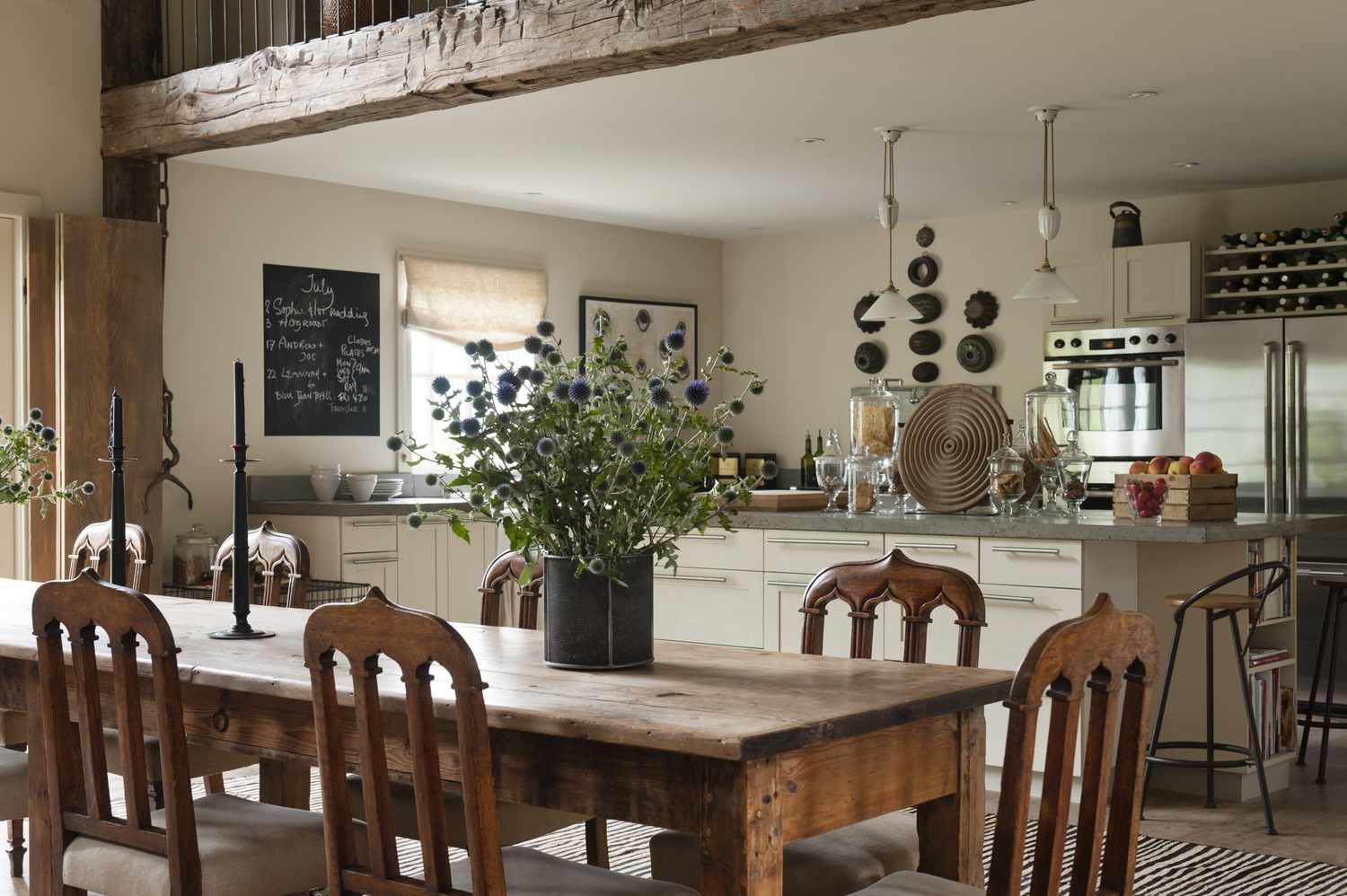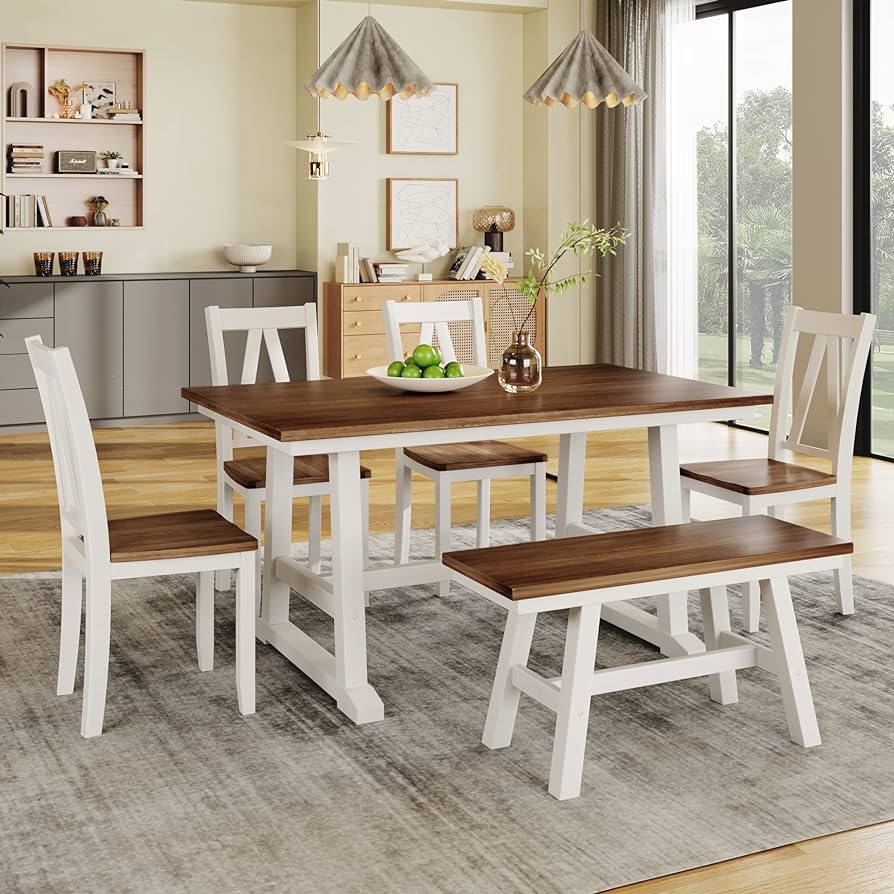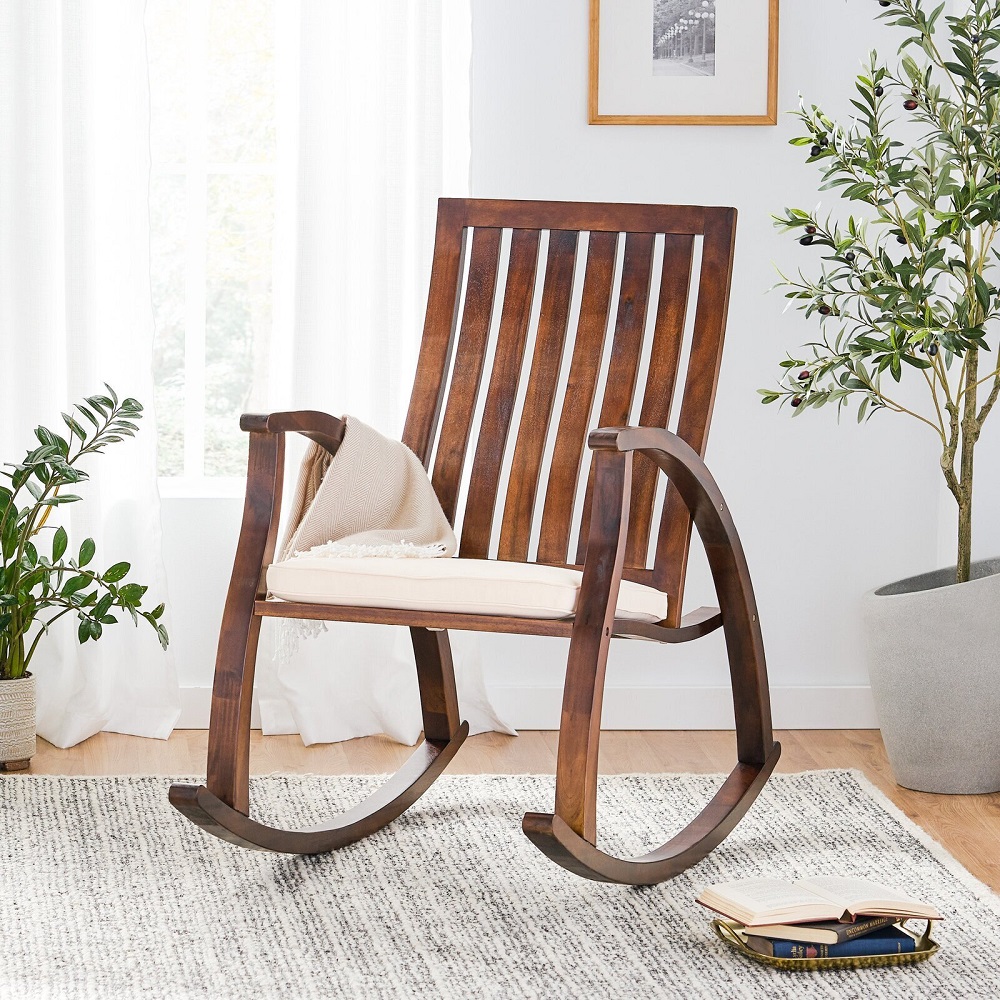Introduction
Evoking pastoral countryside charm, farmhouse style dining tables infuse cozy, yet durable focal points suited to bustling households. These furnishings celebrate natural imperfections in salvaged wood finishes and traditional carpentry techniques over elaborate decoration. Planked tabletops crafted from old floorboards and hand-hewn barn beams bring well-worn character that only deepens with age and use over time.
Farmhouse style also spotlights essential gathering place proportion and versatility through ample rectangular or oval table shapes complete with iconic X-shaped bases or turned legs.Beyond the impressive physicality, this genre offers a glimpse into heritage woodcraft and the pastoral lifestyle of virtue through its respect of unrefined natural splendor and utilitarian form.
The Beauty of Farmhouse Dining Tables
Farmhouse dining decor evokes cozy, countryside vibes through its signature blend of rustic and vintage elements. At the heart sits the farmhouse table, an anchor piece fusing rugged durability with character. Ranging from upcycled finds to custom showstoppers, farmhouse-style tables bring charm along with gathering-friendly silhouettes.
 Quintessential Materials Celebrate Natural Imperfection
Quintessential Materials Celebrate Natural Imperfection
More than a mere surface for dining, farmhouse tables reveal the unique story behind natural materials and techniques used to shape them. Traditional farmhouse aesthetics shine through finishes and builds embracing raw imperfection and the mellowing effects of age and use over time. Some hallmarks include:
- Salvaged Wood – Old weathered barn siding, floor joists or hand-hewn beams get repurposed, celebrating natural nicks, knots, and stains.
- Distressed Finishes – White washed, aged patinas or chalky layered paints enhance the aged appeal and offer lightweight contrast to heavy reclaimed woods.
- Turned Legs & Pedestal Feet – Traditional wood turning methods shape sturdy table bases, often sandblasted, carved or decoratively painted for emphasis.
Beyond the materials, expect charming imperfections like uneven plank widths, exposed joinery elements and varied wood grain textures that add depth.
Farmhouse Shapes & Sizing
In addition to distinctive finishes, farmhouse style dining tables showcase iconic rustic shapes and ample proportions. Common attributes include:
- Planked Top Tables – Constructed from a jigsaw puzzle-like arrangement of edge-joined weathered boards. Planked tops can be rectangular, oval or round.
- XX-Base Tables – A signature farmhouse base shape featuring two wide wooden plank supports crossing under the tabletop in an X formation for stability.
- Large Dimensions – Spacious 60 to 96 inch lengths comfortably accommodate large gatherings and pots of food family-style without feeling crowded.
Makers maintain traditional charm through time-honored wood joinery rather than metal fasteners whenever possible. This natural aesthetic lets organic textures shine as the design focal point versus decorative accents.
Modernizing Farmhouse Style
For a lighter modern or industrial edge, try painted finishes on salvaged wood planking paired with streamlined metal bases in black, white or gunmetal tones. The blending of new and aged elements balances sleek lines with undone texture.In compact homes, circular pedestal café tables trimmed in repurposed barn wood bring farmhouse coziness without dominating floor space.
For bench seating, some updated X-base designs mount salvaged wood plank seats directly into the angular supports. This clean yet rustic furniture silhouette works nicely even in contemporary interiors.However adapted, well-crafted farmhouse style dining tables wearing the jewels of natural elements promise to gather friends and family for generations of meals full of comfort and nostalgia.
 The Pros and Cons of Farmhouse Dining Tables
The Pros and Cons of Farmhouse Dining Tables
Rustic farmhouse dining tables seemingly invite lively gathering around hearty, home cooked meals. Yet their distressed salvaged wood finishes and casual country vibe also come with some caveats when considering these anchor pieces. Evaluating advantages against drawbacks helps ensure you make the best size, style and material decisions for your lifestyle.
Advantages of Farmhouse Style
Nostalgic Look & Feel
With their well-worn finishes and implied history, farmhouse tables cultivate cozy, welcoming spots that feel steeped in tradition.Each dine-in occasion feels like celebrating generations of meals, stories and connections across the salvaged wood grain.
Generous Size & Seating
The quintessential farmhouse table sports wide planked tops stretching 6 feet or longer accompanied by sturdy bases. Even modest examples easily accommodate 6+ diners without feeling cramped. The bountiful real estate welcomes hungry gatherings and creative tablescape decor.
Showcases Craftsmanship
Rather than metal fasteners, most farmhouse builders employ timber joinery for an organic aesthetic. This woodcraft mastery shows through furniture that feels structural versus haphazardly pieced with little regard to joints, lines or finishes.
Built to Last
Proper farmhouse style utilizes durable woods able to withstand scratches, heat damage and the rigors of messy dining unchanged. Once cared for, they potentially serve households through decades and trends without fading into obscurity.
 Potential Drawbacks to Consider
Potential Drawbacks to Consider
Weight & Size Considerations
Planked tops with bulky turned legs quickly push dining table weights into the triple digits. Moving them often requires disassembly and at least two people. Ensure your space can permanently accommodate substantial farmhouse dimensions.
Maintenance Needs
While durable, most have high-maintenance reclaimed wood tops needing gentle care. Avoid abrasive cleaners which damage distressed layering over time. Instead opt for special wax-based polish to nourish wood.
Cost Premiums
Buying antique barn wood and crafting substantial bases by hand translates into sky-high prices, especially for custom work. However, some mid-grade factory reproductions capture the look more affordably.Before selecting your farmhouse table, thoughtfully assess size requirements, placement limitations, lifestyle factors and budget to determine if this investment anchors your space more stylishly than stressfully.
Conclusion
With sturdy craftsmanship that’s endured for generations and distressed natural finishes wearing evidence of their origins, farmhouse style dining tables offer the spirit of heritage alongside ample gathering spaces. As we’ve seen, attention stays centered on the raw splendor of salvaged materials and textural depth of layered finishes rather than applied decoration.
This allows their handmade quality and unembellished form to shine. Farmhouse dining tables not only graciously welcome bustling households but also legacy woodworking traditions that treasured artistry, sustainability and community connectedness above all else. For these reasons, the farmhouse table promises to maintain its pedestal status for generations yet to come.









